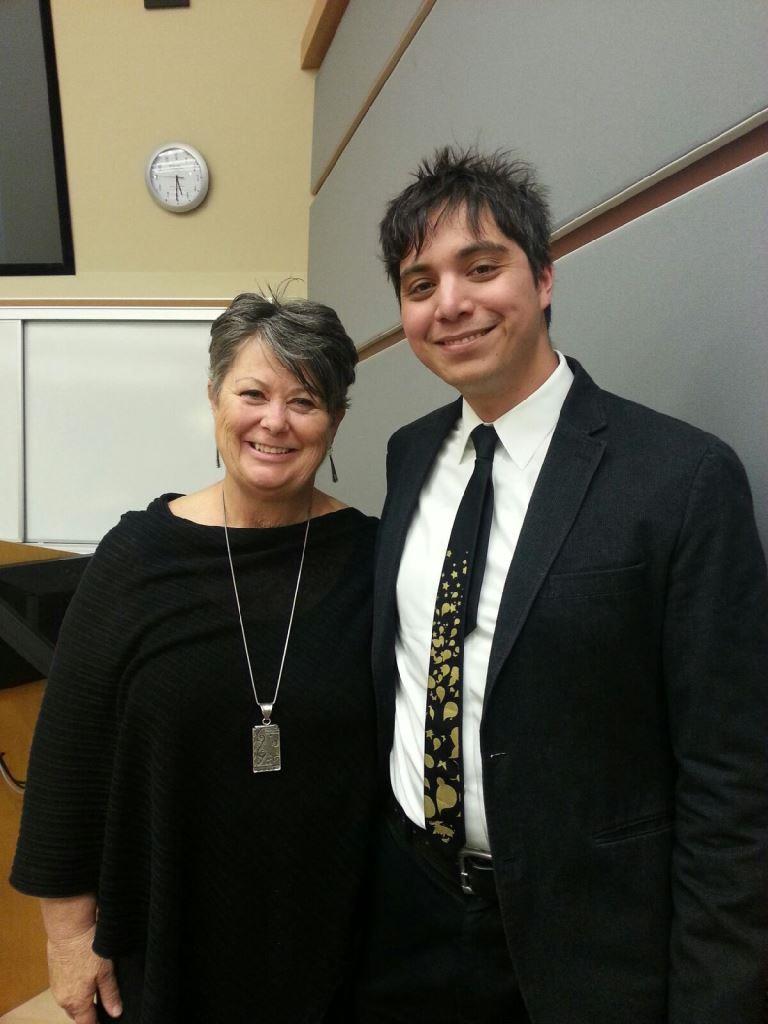Linda Christensen was the sixth and final presenter in the department’s speaker series, “Literacies of Contemporary Civic Life.” Christensen is an Instructor and Director of the Oregon Writing Project at the Lewis & Clark Graduate School of Education, and a Counseling & Rethinking Schools Editorial Board member. Her presentation as part of the series was titled, “The Tulsa Race Riot: Raising Voices Silenced by History” and described this way,
The past is not dead, and it needs to be remembered for students to understand contemporary patterns of wealth and poverty, privilege and marginalization. Our curriculum should equip students to “talk back” to the world. Students must learn to pose essential critical questions: Who makes decisions and who is left out? Who benefits and who suffers? What are the origins of today’s problems? What alternatives can we imagine? What is required to create change? In this presentation, Christensen will engage participants in an examination of a historical event from eyewitness accounts to revisit the history of the 1921 Tulsa Race Riot. Through this workshop, she will demonstrate how she uses “silences” in history to construct solid literacy practices including persuasive essays and historical fiction, building a framework for critical literacy that helps students navigate an increasingly unequal world.
Here’s a video of Linda Christensen’s presentation.

English Department Communications Intern Brianna Wilkins attended the presentation, and has this to share:
After a few weeks’ hiatus, April 22 was the finale of the spring 2014 Speaker Series. Since it’s nearing the end of the semester, crowds usually tend to thin and would rather spend a nice evening outdoors, so it was a lovely surprise to see that so many people came out to support what was the last of a phenomenal series of presentations. Everyone in attendance was graced by the presence of Linda Christensen, the Director of the Oregon Writing Project, located in the Graduate School of Education at Lewis & Clark College.
She spoke about the Tulsa Race Riot of May 31 and June 1, 1921 in Tulsa, Oklahoma. Due to the fact the majority of the audience had never heard of this riot before, the conversation and group activity that took place was one of curiosity and emotion. Christensen’s presentation brought everyone in the room closer together, as we worked together to figure out what really happened during those two days of the riot.
Everyone in the room was given a sheet of paper with a short story about a witness’s involvement in the riot. We were then asked to get up and mingle with people in the room, to work together to find out the cause and effect of the riot. After we received various stories and clues from the people involved we came back together as a group to discuss what all happened during those unfortunate couple of days in Tulsa. Thousands of blacks were left homeless, and justice was never served to those who were affected by the horrors of the riot.
The clue I was given read was about a character named Maria Morales Gutierrez, a Mexican woman who heard the ruckus on the street. After going outside she noticed two black children running loose in the streets without their parents. She rescued them, but a group of white people demanded she hand them over. She refused to do so, but was terrified for her life because so many blacks were being ruthlessly murdered. We discussed that things like this in America’s history are often overlooked and ignored. It’s sad that many of us had no clue that this ever happened, but it was a pleasure for the group as a whole to be engaged and sharing their thoughts about this horrific event.
Christensen explained that she does this activity with many students, and that it engages them to speak and what to learn more about what happened during this piece of forgotten history. This was an eye opening presentation, and it shed light on a part of American history that was denied for 75 years.
I am grateful for being given the opportunity to attend all of the speaker series that were offered. Although the majority of the topics were geared towards English Education majors, it was informative for everyone who attended. Professor Antero Garcia was always full of excitement, and there were always cupcakes and fruit available for us to snack on if we were lacking in energy from a long day. If you missed out on any of these series there are videos that you can view, available in each blog post about the series. If you do decide to tune in, I hope you enjoy them as much we did!
For more information about the Tulsa Race Riot of 1921, please visit tulsareparations.org/TRR.htm
~Brianna Wilkins